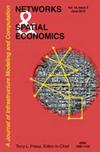时间和空间中的世界货币:对美元的打击还是美元的打击?
IF 1.5
3区 工程技术
Q3 OPERATIONS RESEARCH & MANAGEMENT SCIENCE
引用次数: 4
摘要
讨论了世界支付和积累手段运作问题的理论和实践方面。它表明,美元是世界货币的一种特殊形式,以及其他“主导”货币,因为它作为其他国家的可靠资产的功能,要求发行国特别强大的国家机构和对这种本国货币的信心,美元也是国际结算和世界支付手段、积累和流通媒介中的普遍等价物。它确定俄罗斯卢布是“商品”货币,但不是“主导”货币,它在国际结算中的份额几乎是微不足道的。它表明,在其他条件相同的情况下,美元将继续流入俄罗斯,因为俄罗斯出口的原材料主要以美元在世界市场上进行交易。据透露,俄罗斯经济的去美元化战略并没有使美元从俄罗斯的出口支付中被取代,欧元在支付中的份额明显增加。研究发现,俄罗斯的结算没有进行从中国向本国货币的过渡,EAEU国家仍然是俄罗斯结算中唯一的卢布区。文章表明,俄罗斯试图转向完全以卢布结算的做法,无异于为一个小国创造一种专属的货币流通体系,在“主导”货币范式的框架内,这种体系显示出其局限性。由于孤立于美元和欧元国际结算体系之外,俄罗斯经济面临的风险是发达国家目前制裁的一部分本文章由计算机程序翻译,如有差异,请以英文原文为准。
World Money in Time and Space: A Blow to the Dollar or a Blow by the Dollar?
Theoretical and practical aspects of the problem of functioning of the world’s means of payment and accumulation are discussed. It is shown that the US dollar is one of the specific forms of world money along with other ‘dominant’ currencies due to its function as a reliable asset for other countries, requiring for the issuing country exceptionally strong national institutions and confidence in this national currency, the American currency is also the universal equivalent in international settlements and the world’s means of payment, accumulation and medium of circulation. It is determined that the Russian ruble is ‘commodity’ currency but not the ‘dominant’ currency, and its share in international settlements is almost imperceptible. It is shown that, other things being equal, the American currency will continue to flow into Russia, since the export of Russian raw materials is traded on the world market mainly in dollars. It was revealed that the strategy for de-dollarization of the Russian economy did not contribute to the displacement of the dollar from payments for exports from Russia, with a noticeable increase in the share of the euro in payments. It was found that the transition in Russia’s settlements from China to national currencies was not carried out, and the EAEU countries remained the only ruble zone in settlements for Russia. It is shown that Russia’s attempt to switch to settlements exclusively in rubles is tantamount to creating an exclusive money circulation system for a small country, which, within the framework of the ‘dominant’ currencies paradigm, shows its limitations. The risks for the Russian economy as a result of its isolation from the system of international settlements in dollars and euros are formulated as part of the current sanctions by developed countries
求助全文
通过发布文献求助,成功后即可免费获取论文全文。
去求助
来源期刊

Networks & Spatial Economics
社会科学-运筹学与管理科学
CiteScore
4.00
自引率
4.20%
发文量
26
审稿时长
>12 weeks
期刊介绍:
Networks and Spatial Economics (NETS) is devoted to the mathematical and numerical study of economic activities facilitated by human infrastructure, broadly defined to include technologies pertinent to information, telecommunications, the Internet, transportation, energy storage and transmission, and water resources. Because the spatial organization of infrastructure most generally takes the form of networks, the journal encourages submissions that employ a network perspective. However, non-network continuum models are also recognized as an important tradition that has provided great insight into spatial economic phenomena; consequently, the journal welcomes with equal enthusiasm submissions based on continuum models.
The journal welcomes the full spectrum of high quality work in networks and spatial economics including theoretical studies, case studies and algorithmic investigations, as well as manuscripts that combine these aspects. Although not devoted exclusively to theoretical studies, the journal is "theory-friendly". That is, well thought out theoretical analyses of important network and spatial economic problems will be considered without bias even if they do not include case studies or numerical examples.
 求助内容:
求助内容: 应助结果提醒方式:
应助结果提醒方式:


